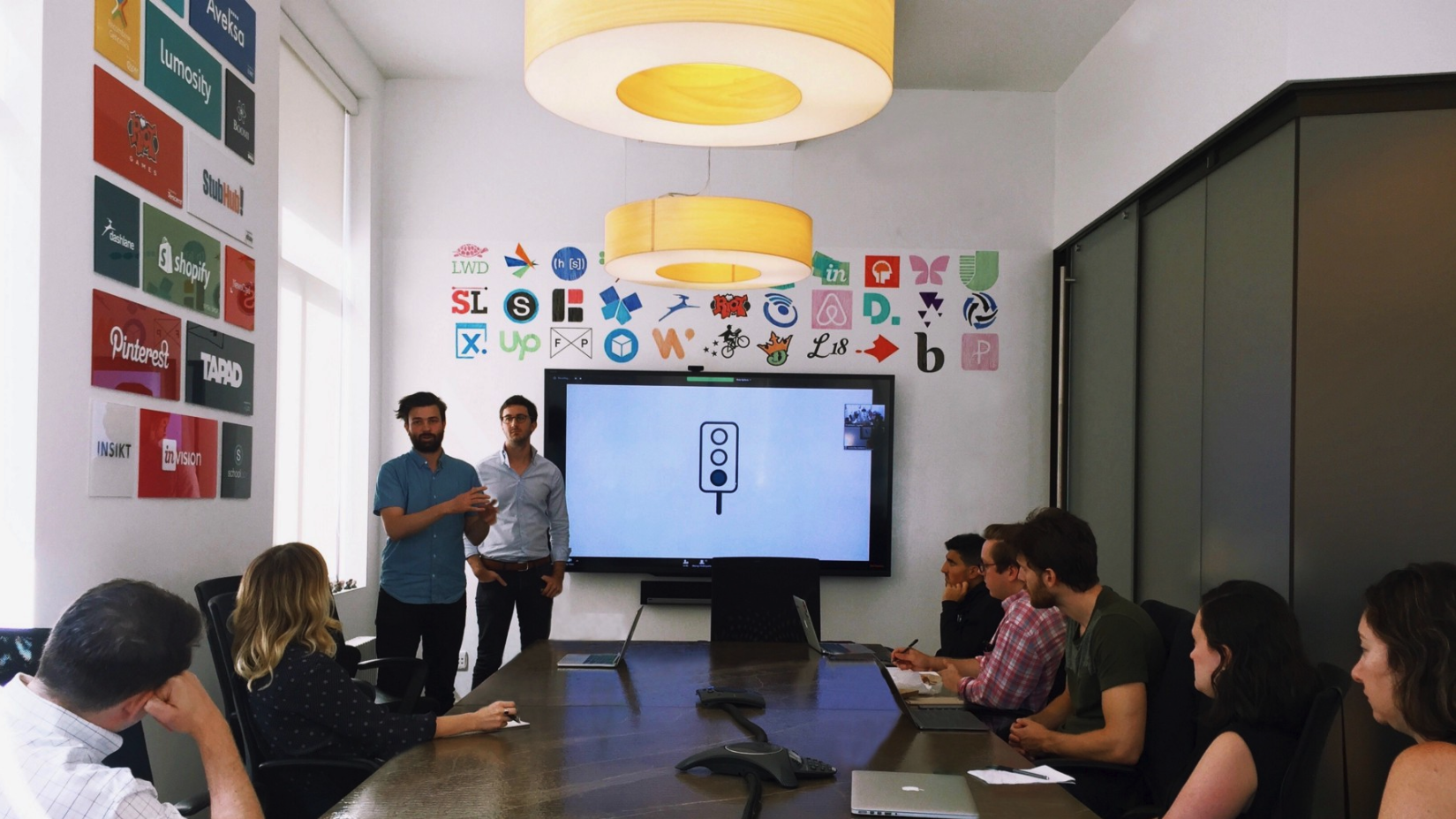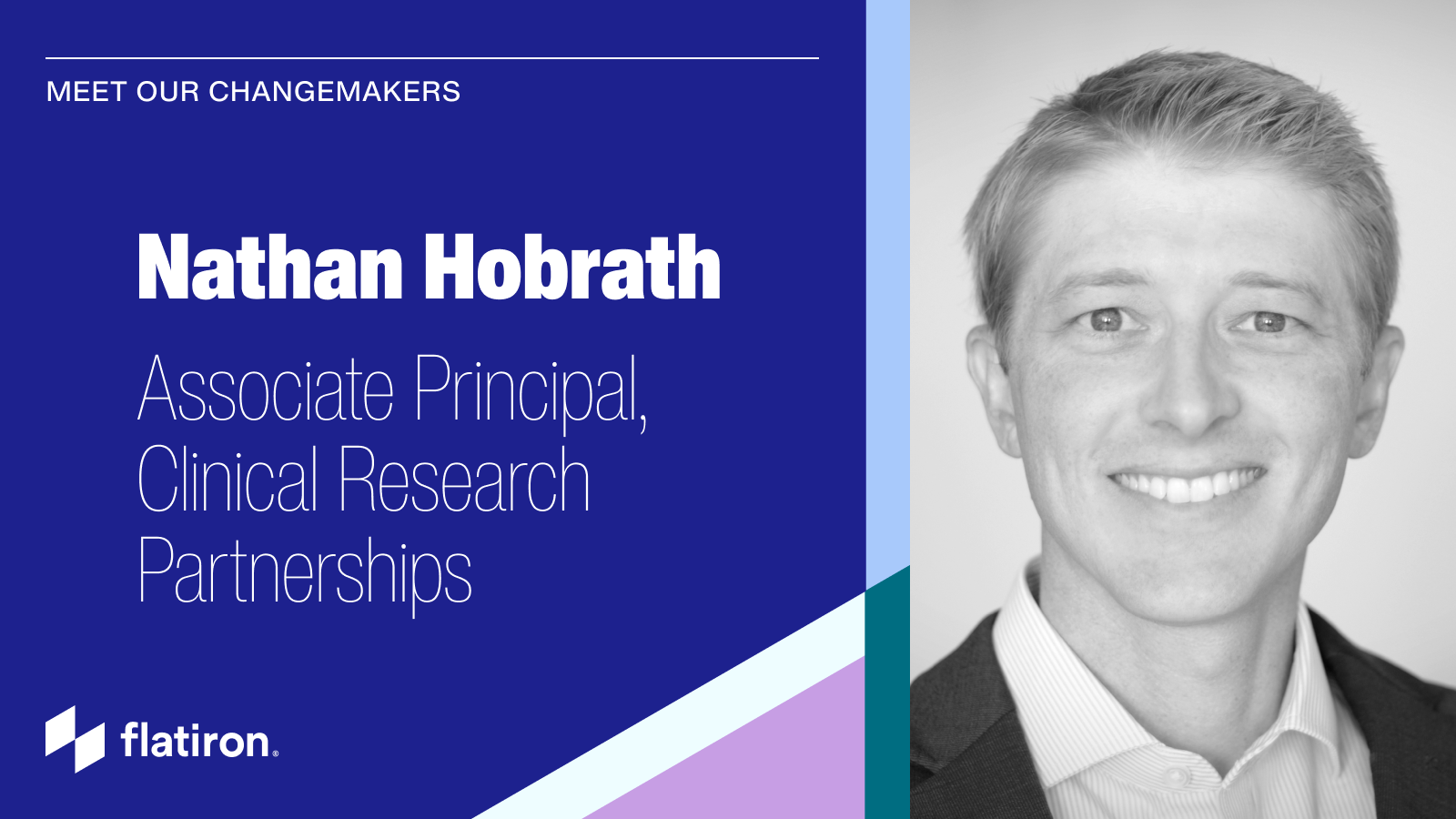This post was first published by FirstMark.
Chances are you've heard of the "design sprint," a five-day process that helps answer critical business questions through rapid prototyping and user testing. (If you're new to sprints we recommend you first check out the book to learn the nuts-and-bolts.)
While there is a ton of content available detailing sprints, there is far less guidance on what needs to happen before and after to ensure success. In short, how you prepare and follow through is just as important as the sprint itself. Read on to learn more.
Flatiron Health—the unicorn healthcare startup on a mission to outsmart cancer—has completed 10+ design sprints over the last three years. Many of those were assisted by the very team of Google experts that invented the process. Flatiron's design sprints have resulted in three shipped features, the creation of a new operational process and an entirely new product line. Because of their time in the trenches of the sprint process, they've learned valuable insights on best practices.
Flatiron's Director of Product Management, Alex Ingram and Lead Product Designer, Coulton Bunney have been instrumental in the majority of Flatiron's sprints. They recently paid a visit to FirstMark to take us through one of their sprints and the three most important questions they always ask to guide the process.
Flatiron's Sprint Goal: Help Increase Clinical Trial Enrollment for Cancer Patients
It might be surprising to hear that just four percent of all U.S. cancer patients are enrolled in clinical trials, but that's the reality. This means the other 96 percent of patient treatment data is unavailable to doctors and researchers who could use it to better understand the disease and treat future patients. Flatiron saw an opportunity to apply technology to increase enrollment beyond four percent, which would ensure more patients get access to the right therapies.
The team utilized design sprints as a powerful tool for tackling large-scale problems in the past, but they knew the process isn't appropriate in every situation. Before proceeding on this one, they took a step back and asked themselves the first question:
1. Before the Sprint: Should We Run a Design Sprint at All?
Recognize that you are asking for a substantial time commitment from key members of your team for an entire week. Before you start, set the bar high for determining which problems are actually worthy of a sprint. To do this:
Evaluate what's at stake. Flatiron knew the high level problem: patients were traditionally falling through the cracks in the trial enrollment process. But they wanted to get deep into clinical workflows to devise a solution that was better than the current (and manual) approach that practices took to match patients to trials. Ultimately for Flatiron, the potential benefits of streamlining the clinical trial recruitment process far outweighed the risks of misallocating their team's resources for a week.
Identify commitment to change. Understand that you will have new, and often unexpected, data at the end of the sprint. Before you invest in the process, make sure your company or team is willing to shift resources and priorities based on the findings, including buy-in from senior leadership if needed. If resources cannot be allocated for another year, hold off on the sprint until you know your company can follow through on the learnings. Flatiron knew they'd be able to relatively quickly devote resources to building whatever product idea came out of the clinical trial design sprint.
2. How Do We Get Started?
Once you determine it's worth devoting your team's time to a sprint, here's the way Alex and Coulton recommend setting it in motion:
Write a sprint brief. This is a shareable doc to get stakeholder buy-in before the sprint. Use it to to explain the following (don't worry, this can/will change after you begin the sprint):
-
The goal of the sprint. A general idea of what you hope to accomplish, and what success looks like.
-
The intended output. What assets you hope to walk away with at the end of the week. A marketing strategy? A new feature idea? A new product?
-
What you already know about the topic. Compile the information you already have (existing user research, customer surveys, company guidelines, etc.) and determine exactly what you know and—perhaps more importantly—what you don't.
-
Invest in pre-research. Not every sprint will require preparatory research, but it was a necessity for Flatiron's first sprint on clinical trials. Before trying to solve the problem, the team spent over 35 hours at cancer clinics speaking to oncologists, nurses, and research staff to get a detailed look at the nuances of their workflows.
Whether the necessary user research already exists at your company or not, obtain and synthesize it before the sprint. Flatiron spent around three weeks synthesizing the research they'd compiled during their road trip. They walked into their sprint ready to share an overview of the clinical trial recruitment process at oncology centers, along with user profiles, behaviors and pain points.

Don't let the time commitment deter you from this step, advises Coulton. Flatiron's original clinical trial road trip was nearly three years ago, and the company still refers back to that user research today.
3. You've Sprinted! What's Next?
Finally, just as important as the sprint itself is what you do afterwards.
Go on an internal roadshow. Remember, your sprint took place in a small group. It's time to teach the rest of the company what you've learned.
Armed with a product prototype and key findings for improving clinical trial participation, Flatiron went on another road trip—this time within the company. This step is where so many companies go wrong, according to Alex.
You need to get the broader organization to understand how you arrived at your insights by taking the company on the same journey that the sprint team went through.
In Flatiron's case, the team presented their findings during a company wide all-hands meeting and followed up a few months later via email to update the team on progress.
Don't lose momentum. Your team will never be more excited about next steps than right after the sprint. You need to take advantage of that enthusiasm, so don't let the insights sit for too long. Keep moving, urge Alex and Coulton. Share your findings with the company and get to work on your learnings!



